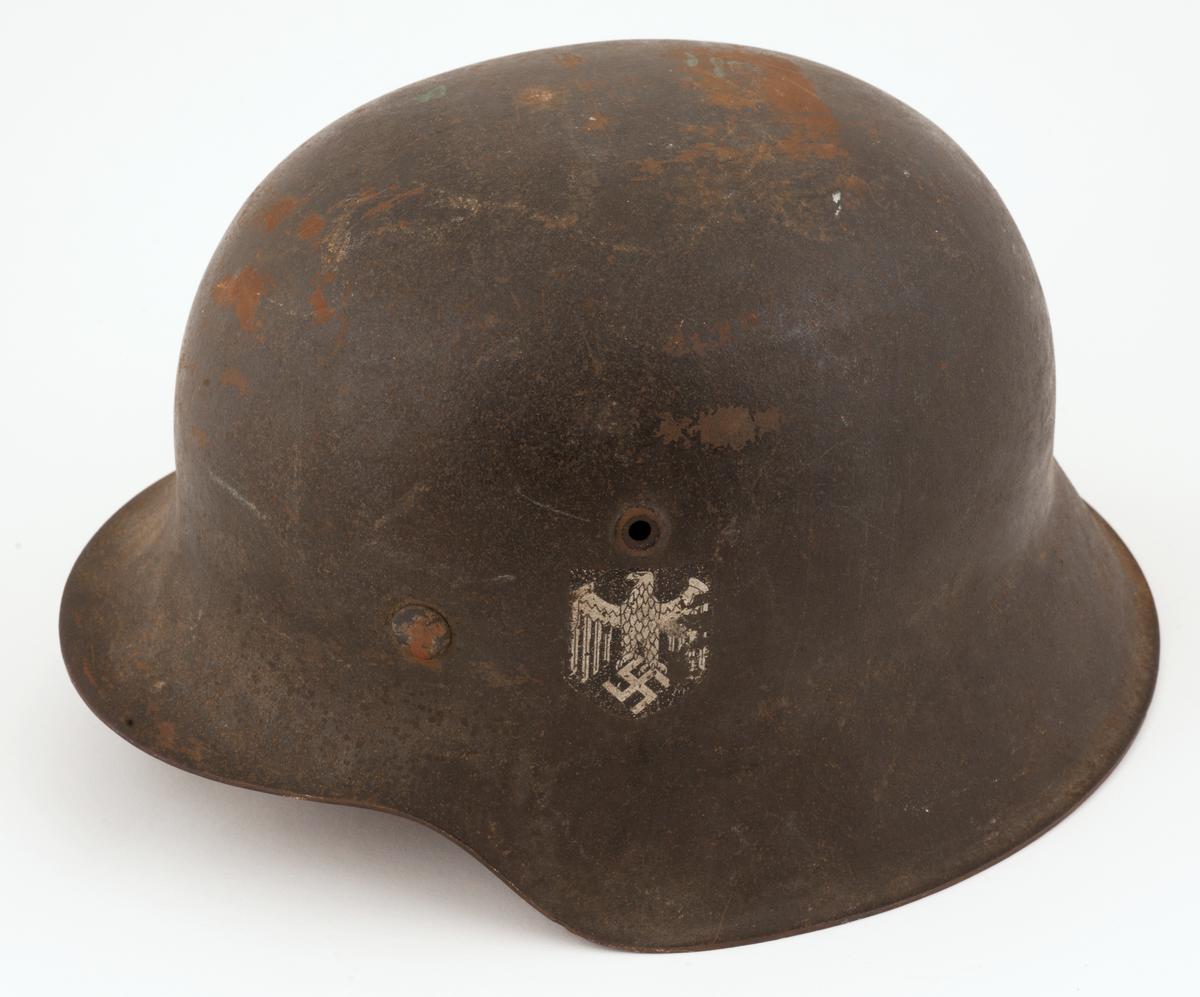-
German helmet. Jon-Erik Faksvaag | Norsk Folkemuseum
War witnesses and veterans are reducing in number. Only the very youngest of the Wehrmacht soldiers who were in northern Troms and Finnmark are still alive with their memories. Most of them came from Germany and Austria.
Who were they? Propaganda photographers took pictures and did film recordings. They documented strategies and orders from Berlin, but also the everyday life of the soldiers and the conditions at the front and in the field hospitals. The person behind the uniform emerges in private photographs, personal letters, drawings and diaries. Strange and desolate landscapes at the “Arsch der Welt” – the end of the world – were conveyed with fascination or fear. One soldier described it as “an unreal reality”. They both cursed and marvelled at the midnight sun. The Sámi reindeer herders were admired for their resilience and skill in the Arctic winter.
The soldier: from the brute without mercy to the terrified son fighting for those at home and for his country. The one who carried out orders that he could never have imagined. There is documentation of deserters who were shot, and of a local population trying to help.
War creates both visible and invisible tracks or scars in individuals and families – across many borders. Much is forgotten or suppressed, because life must go on. Confrontation and reconciliation have taken place on many levels and over a long period. Many soldiers have also wanted to pass on this heritage.
